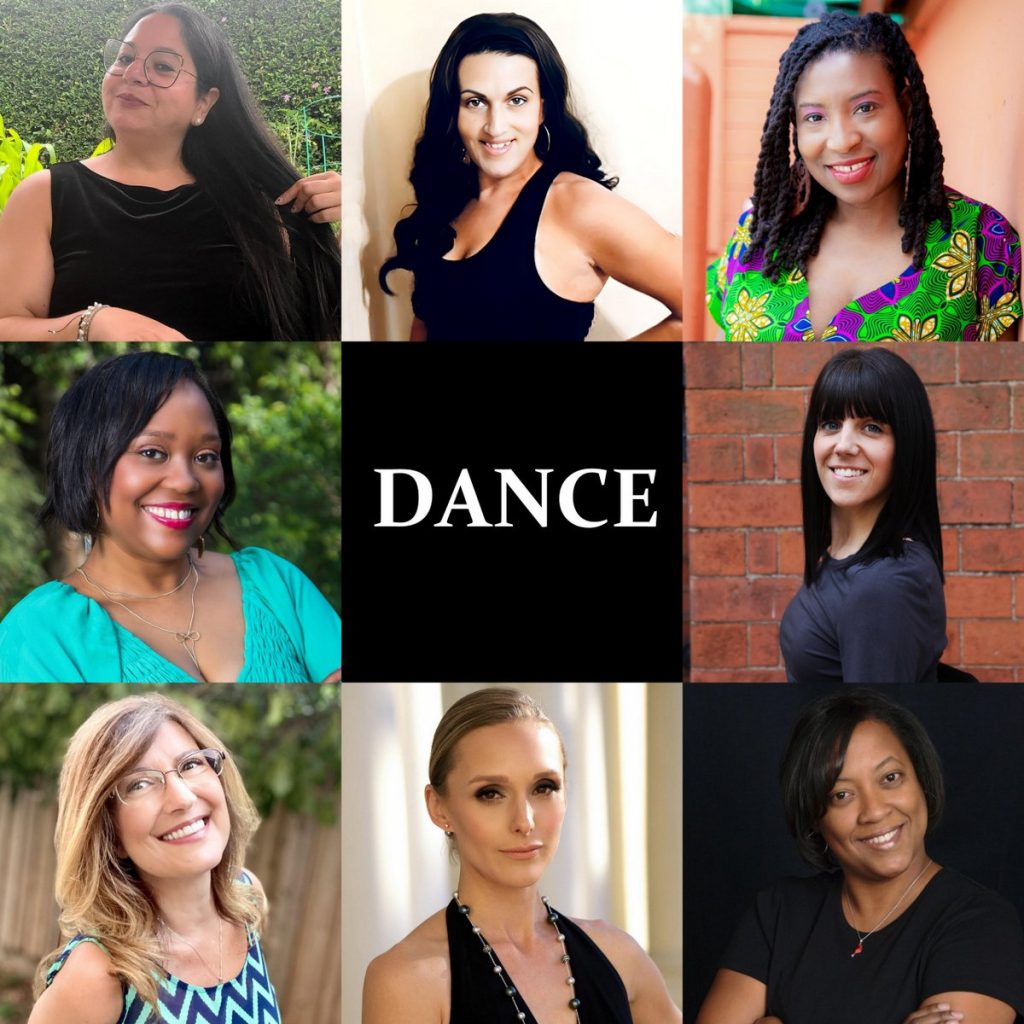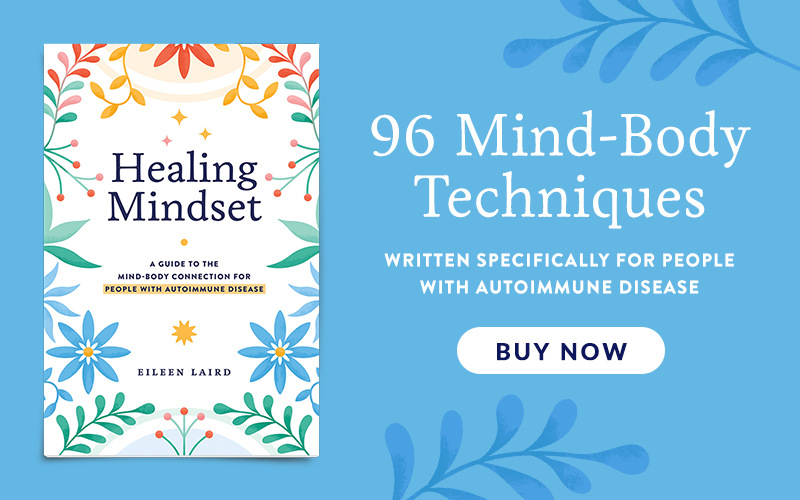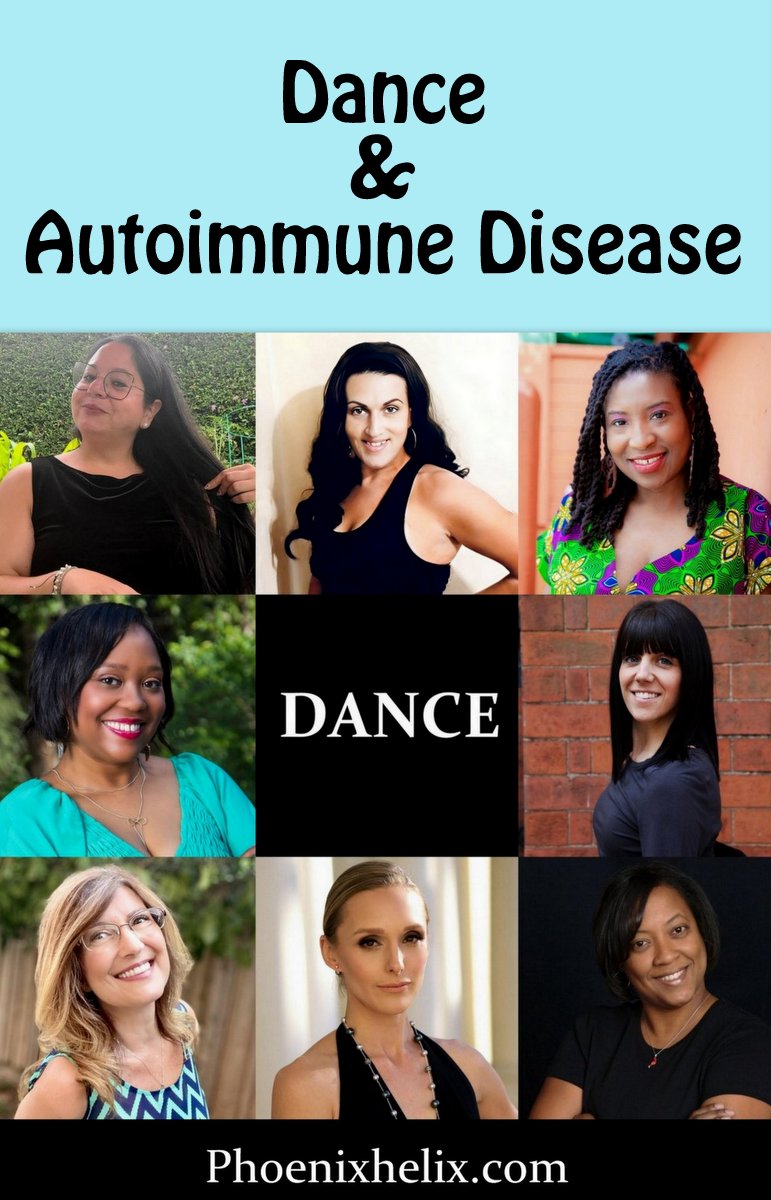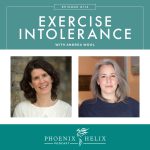
What Is Dance Therapy for Autoimmune Disease?
Dance therapy is defined as the psychotherapeutic use of movement to improve health and wellbeing. For people with autoimmune disease, there’s research supporting the benefits. For multiple sclerosis, dance can improve gait and balance. For rheumatoid arthritis, dance improves ease of movement. For fibromyalgia, dance can reduce pain. There are also overall benefits that apply to everyone: reduced depression and anxiety, improved quality of life, and improved body image.
That said, if you’re living with chronic illness and chronic pain, dance poses challenges. If your body has changed with autoimmune disease, can you still dance? On hard days, can dancing make your day better? The eight people featured in this article answer a resounding yes to both of those questions. Below, they share what dancing means to them, and how they adapt dance around their autoimmune symptoms. They also share videos showing their joy in dancing.
Dancing with Rheumatoid Arthritis – Krista Rowan
@kickra18 Magic happens when you focus on what you can do; not what you can’t. 🙏💃🏻🥰 I promise you – even with limitations, all movement is beautiful. Dance however you can and don’t deny yourself the joy, and physical benenfit that movement brings. #loveyourselfmoving #allabilities #dance #grateful #autoimmune #rheumatoidarthritis #perspective ♬ Clumsy – Fergie
“I used to feel shame and defeat when rheumatoid arthritis affected the way I could move. I became stuck, comparing myself to others, and also a former version of myself. Dance has provided me with freedom to move my body however I can; removing psychological limits. It’s created joy and allowed for personal expression; while also building strength, balance, range of motion, and confidence. I no longer feel broken and am grateful for the improvement that dance has made to my mental and physical health.” ~ Connect with Krista on TikTok or Instagram.
Dancing with Multiple Sclerosis – Lillian Redding
@wonderfullypained Emerging from a 48hr Multiple Sclerosis Migraine !! Dancing through the Pain💃🏽with a Cane🦯 🧡🧡🧡. #multiplesclerosis #ms #mstok #thisisms #disability #dancechallenge #migrainerelief ♬ Young Hearts Run Free Benji La Vida Edit – That’s Groovy Bro!
“When I was diagnosed with MS five years ago, I was frustrated that I couldn’t dance like I used to. I love to dance to any music; it gives me an escape from my troubles and allows me to express my emotions. It brings me joy! I became fearful that my legs would give way or I’d be overcome by fatigue. I was determined that my diagnosis wouldn’t steal my happiness so I adapted. I use my cane as a prop when I dance. There are movements I can no longer do so I modify them and make up my own. I love it! Dancing is a great form of exercise. It helps me physically to stay active and work on my balance and muscle tone. Mentally it puts me in a great space. I choose music with lyrics that inspire me to keep moving and fighting. I often say, “Dance through the pain.” My hope is that if others see me dancing, they will join in. Tap your toes, wave your hands, sing along – life is still good.” ~ Connect with Lillian on TikTok or Instagram.
Dancing with Crohn’s Disease – Theodora Pestana
@pestanalife Celebrating #worldibdday 2022💜! Sharing some #tbt dance and vlog clips to help do our part to our a face and a name to those with #ostomybag #ibd #chronsandcolitis #disibilityawareness and remind you all that #differncesarebeautiful and if you are newly diagnosed or facing surgery or a loved ones is, you are not alone! #iliostomy #ostomyawareness #chronsdisease #ulcerativecolitis #chronsandcolitisfoundation #ibdwarrior #ibdvisible #ibdgirls #montelier #bachatera #dancer #bachaterawabag ♬ A la Vida la la La – Montelier
“I began dancing as a small child prior to my diagnosis of Crohn’s-Colitis at age 21. Since then, I have undergone many surgeries including my proctocolectomy that made me a permanent ostomate in 2011. I choose to enjoy dance however my medical circumstances allow me to. Rather than get discouraged, I get creative. For example, in my preferred genre of Latin dance, Bachata, there are some fluid body roll motions my post-op abdomen simply can’t execute. Rather than sit out of a class, I adapt by improvising an alternate movement. I stay mindful of my stamina and rest both before and after a dance class or event. I also use a compression wrap on my abdomen when taking more than one class in a day.
Dance will always be such a part of my soul. It brings me such happiness and makes me feel alive. When dancing, I can block out everything else in life, get lost in the music, and can just “be” in the moment. Doing so benefits my mental and physical health. When dealing with the anxiety of an upcoming procedure, recent diagnosis, or any stresses of life and/or health, dance is my therapy. Dance is also special in my personal life as I met and fell in love with my husband through dance. If you follow me on social media, many videos feature us dancing together. We share our story to use the pain for a purpose to encourage and inspire others of what’s possible.” ~ Connect with Theodora on TikTok or Instagram.
Dancing with Ankylosing Spondylitis – Soneka Lee
“For me, dancing is a form of entertainment, expression, and stress relief. I grew up listening to different types of music which led me to enjoy different types of dancing. When I dance, I feel free. I let go of all my worry and stress. I get to feel the music, move my body, and let my mind go.
In addition to being an autoimmune warrior, I’m also a physical therapist and I recommend dancing to my patients. Dancing releases positive hormones that can make you feel happy and decrease pain. It also helps with relaxation, range of motion, and building strength. With autoimmune disease, our bodies have good and not-so-good days. Some days we can be on our feet all day, and other days we have to rest in bed more than we like. The great thing about dancing is we can do it standing or sitting. It’s all about letting your body, mind, and soul feel the music.” ~ Connect with Soneka on TikTok or Instagram.
Dancing with Ulcerative Colitis & Lupus – Kristin Hakala
“Dance is life. I feel most myself when I am in a dance space. I started ballet at the age of 3 and never stopped. I became a professional ballet dancer at the age of 16 and later became a principal dancer with Ballet West. Unfortunately, as I was nearing 30, I developed ulcerative colitis. I didn’t have the support or resources that I needed, nor did I know how to ask for help. In the dance profession it’s really ‘survival of the fittest’ and I didn’t feel that I could take time off or reveal my diagnosis to anyone. In a state of exhaustion and burnout, I left my full-time performing career. A few years later, I received a second diagnosis of systemic lupus.
Over the past 10 years, I have had to learn to truly listen to my body in a different way. In the past listening to my body meant knowing I was tired or hurting but pushing that aside because there seemed to be no other option. Now listening to my body means that I modify many aspects of my life in order to have energy for what I love to do – dance and teach! I limit sun exposure, find time to rest, eat a healthy diet, as well as taking medication. I also modify my dancing and teaching depending on how I feel each day. Continuing to dance with autoimmune disease and through aging is really a journey of deep awareness and honoring the body you have. We often feel that it’s ‘all or nothing’ but it is possible and respectable to come to class and do what you are capable of in that moment. The benefits of dance are tremendous. Whether I am teaching or dancing, there is nothing else that brings me such a feeling of being fully alive and present in what I am doing.” ~ Connect with Kristin on Instagram.
Dancing with Multiple Sclerosis – Rebecca Fowler
“Dance to me means freedom and happiness. It’s both a creative outlet where I can focus on what I am able to do and a fun way of keeping active. I choreographed the dance featured in this video during the COVID-19 pandemic after a year of dancing at home. Now in 2023, I’m grateful to be performing publicly again as a member of the professional dance company, Propel Dance.
As a wheelchair dancer, I find dance easy to adapt depending on how things are for my body on a certain day. Adapting choreography to make it less strenuous, or to work with any changes in how my body feels, means it works for me regardless of any flare-ups I might be experiencing. The benefits I have experienced have been huge. Physically, I have improved posture, core stability, and stamina. My fatigue has also improved and is easier to manage generally, meaning day-to-day life is a little easier for me. My mental health has also improved, and I feel much better in all aspects of my life when I’m dancing regularly.” ~ Connect with Rebecca on Instagram.
Dancing with Hidradenitis Suppurativa – Tatiana Arias
“I love to dance. Dancing is almost unconscious for me. I swear I don’t even try to dance when music comes on – I’m Lebanese and Colombian so I guess it’s in my blood…or maybe in my hips hehe. Dancing is celebration, dancing is energy, dancing is release, dancing is protest. Dancing is prayer.
While HS has affected my life in many ways, thankfully it has never affected my range of motion too much because dancing is medicine for me. There are physical benefits, like looser joints, more flexibility, and more stamina; if I wake up stiff or with random aches and pains, a good dance is even better than a good stretch.
Dancing is also meditation. Mentally, it can transform my whole day, flip my mood like magic. Even if I dont feeeel like dancing, if I put music on, my body instinctively reacts. Like a ship in the ocean surrenders to the waves, my body is carried by the rhythm. With every shoulder shimmy, with every hip swing, with every toe tap, my nervous system calms, and suddenly I’m smiling and singing and breathing more deeply. Dancing is alchemy.” ~ Connect with Tatiana on Instagram.
Dancing with Myasthenia Gravis – AmiCietta D. Clarke
“I feel free when I dance. It’s the ultimate way that I’m able to release my feelings, express my joy, and escape from my current circumstances. I’m always grateful to be able to move my body, knowing that I’ve experienced weakness in my arms, legs, and eyes due to symptoms of myasthenia gravis, a rare autoimmune disease. When I’ve had weakness in my arms, I’ve done more moves with my lower body, and I’ve done the opposite when I’ve had weakness in my legs. When I haven’t been able to see clearly and have been down, I’ve put on some good music, closed my eyes and imagined myself moving my body in a way that feels natural, and that always makes me feel better.
That’s what I love about dancing, even though there are many scripted dance moves, dancing is also what you make it and I make up new moves all the time, even sometimes in my mind’s eye. It fills me with joy and makes me feel like I can tackle anything.” ~ Connect with AmiCietta on Instagram.
You May Also Be Interested In






